MusicRadar Verdict
Motor Synth II is a bastion of ingenuity. It’s noisy and expensive, but so much fun. There’s nothing quite like it.
Pros
- +
Flexible signal routing.
- +
Plenty of sequencing and modulation options.
- +
Deep and engaging.
Cons
- -
The mechanical noise from the motors can be deafening.
- -
No onboard effects.
- -
Cost prohibitive for some.
MusicRadar's got your back
Gamechanger Audio Motor Synth II: What is it?
When the Motor Synth first landed, it’s fair to say everyone was intrigued. Gamechanger Audio even had the likes of Jean-Michel Jarre and Richard Devine enthusing over “the world’s first electro-mechanical desktop synthesizer”, even to the point of getting you to back the IndieGoGo campaign.
Fast-forward five years and a successful crowdfunding campaign and we’re on to version two of this rather unique synth. Gamechanger Audio is no stranger to esoteric sound sources (see Plasma Voice module), and the Motor Synth II is no different. Eight brushless motors drive discs marked with three concentric patterns representing three waveforms – saw, sine and square – with a fourth ‘M’ wave powered by an electromagnetic inductive sensor on each motor.
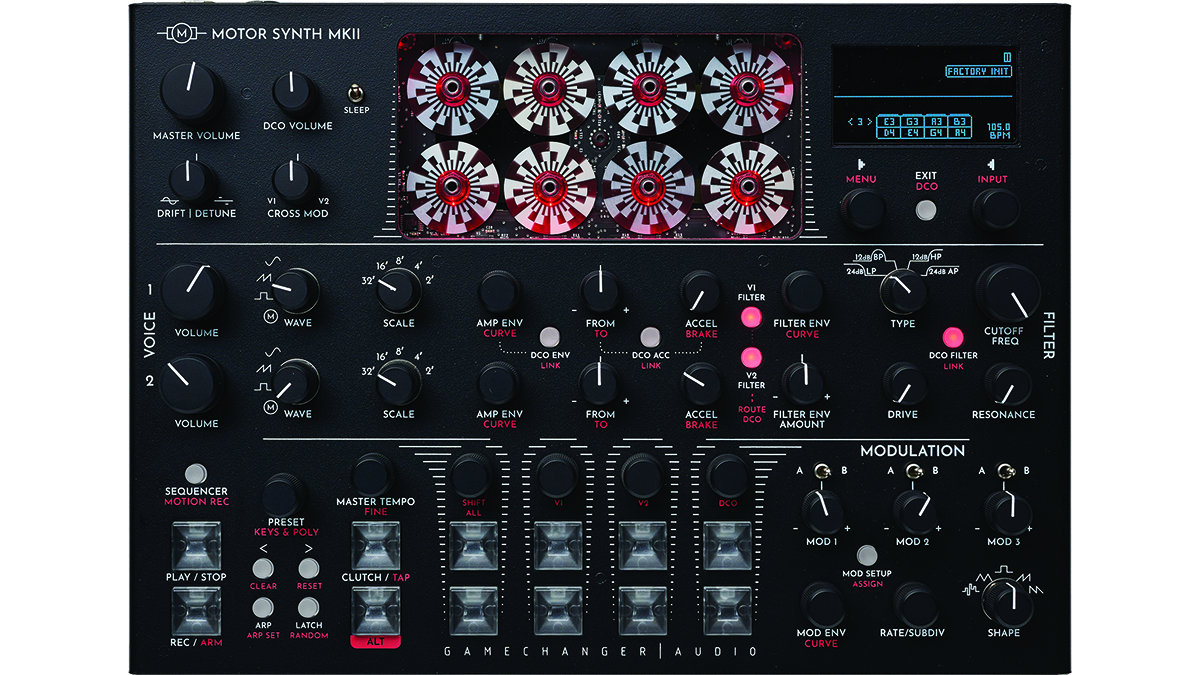
Gamechanger Audio Motor Synth II: Performance and verdict
The original instrument made do with two independent voices and four-note polyphony from the eight motors, but plenty of improvements have been made. New to the Mk II is the addition of a DCO with four digital oscillators and four-note-polyphony. Each oscillator has up to six waveforms (including noise) with PWM, wave-folding and independent pitch, amp, envelope and filtering control. The DCO can be linked to the two electro-mechanical voices at various points along the signal path, too.
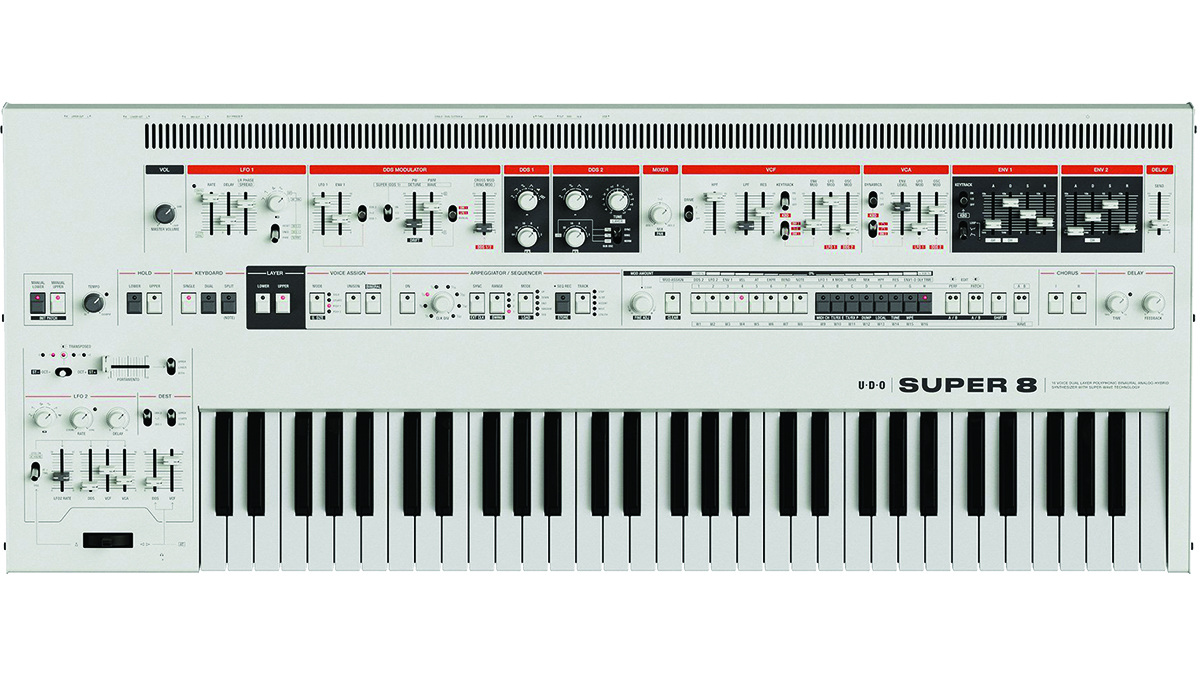
• UDO Audio Super 8
The newest sibling to the Super Gemini is priced closer to the Motor Synth II than UDO’s flagship and is similarly aligned with its forward-thinking approach and independent voice architecture.
• Erica Synths Syntrx II
The Syntrx II is also chock full of sonic exploration, but a bit easier to navigate and a grand less.
• Modular system
Esoteric sound sources, flexible signal routing, etc? It’s got be a bespoke modular system.
With discs as oscillators, physical control of these electro-mechanical sound sources comes in the form of Accelerate and Brake functions that take care of the pitch envelope. Both functions allow you to select the speed at which you wish to travel from one note to another (per voice) in Target mode or a more traditional Glide between triggered notes. Different note ranges and rates can be selected across the three voices independently in Target mode, so you can get some really interesting results. Also new in this edition are two extra polarity rotaries for easier control of the pitch envelopes.
Moving to the right you’ll find the amp envelope with seven envelope types at your disposal (ADSR, AD, AR, DADSR, ADSHR, AD LOOP and ADS). For the number of features available and the size of Motor Synth II, it’s little wonder that many of the features lie within menus with most controls stacked, accessed by the Alt button. The amp envelopes are crammed into just two rotaries, which is fiddly to start with. It doesn’t take long to get over the inconvenience, but a small bank of faders would be preferable for the job. Despite this, Gamechanger has crammed a lot of functionality into the envelopes with the ability to tweak stage levels, curves, time and breakpoints from the menu screen.
There are two identical multimode filters – one per Motor voice – and a digital filter for the DCO. Again, these have been updated with version two. The signal path is polyphonic up until the filter and paraphonic thereafter. Four types of filters are 24dB low-pass, 12dB band-pass, 12dB high-pass and 24dB all-pass. Thankfully, the Filter section has more hands-on control, allowing you to flick between the filters with ease. Also updated is the Modulation section, which features three LFOs, each with two destination slots and switchable polarity control.
There are eight banks each with over 200 sound presets that cover everything from your standard basses, pads, leads, pianos and organs, to the more esoteric soundscape and arpeggiated sounds. Bank Eight is full of patches created by Richard Devine himself. Not to be confused with Projects, Presets will only recall sounds, whereas Projects will contain sound presets, sequences, song arrangements and more. They’re all stored on an included microSD card, so you’re free to overwrite or delete the stock selection. Generally, all the shipped preset sound design does a very fine job of showing off what Motor Synth II can do, and there are plenty of creative jump-off points along the way. By default, each time you start Motor Synth II, you are greeted with the Factory init patch, which can be frustrating if you’re working on a particular project and want to get started on it immediately. There is an option to change that but it’s pretty buried.
Want all the hottest music and gear news, reviews, deals, features and more, direct to your inbox? Sign up here.
An initialised patch does, however, inspire exploration, it wants you to build from scratch. If you’re still feeling creatively bereft, another helping hand comes in the form of the Random generator – a highly useful feature that can randomise a wide variety of functions with varying degrees and all customisable via the menu screen. Broadly speaking, you can set up randomisation for either sounds or sequences and arp patterns. Dive into the menu and you’re able to select the amount of randomisation for certain parameters. You can even set up and save a set of randomised parameters that can be recalled and applied to any preset in the future.
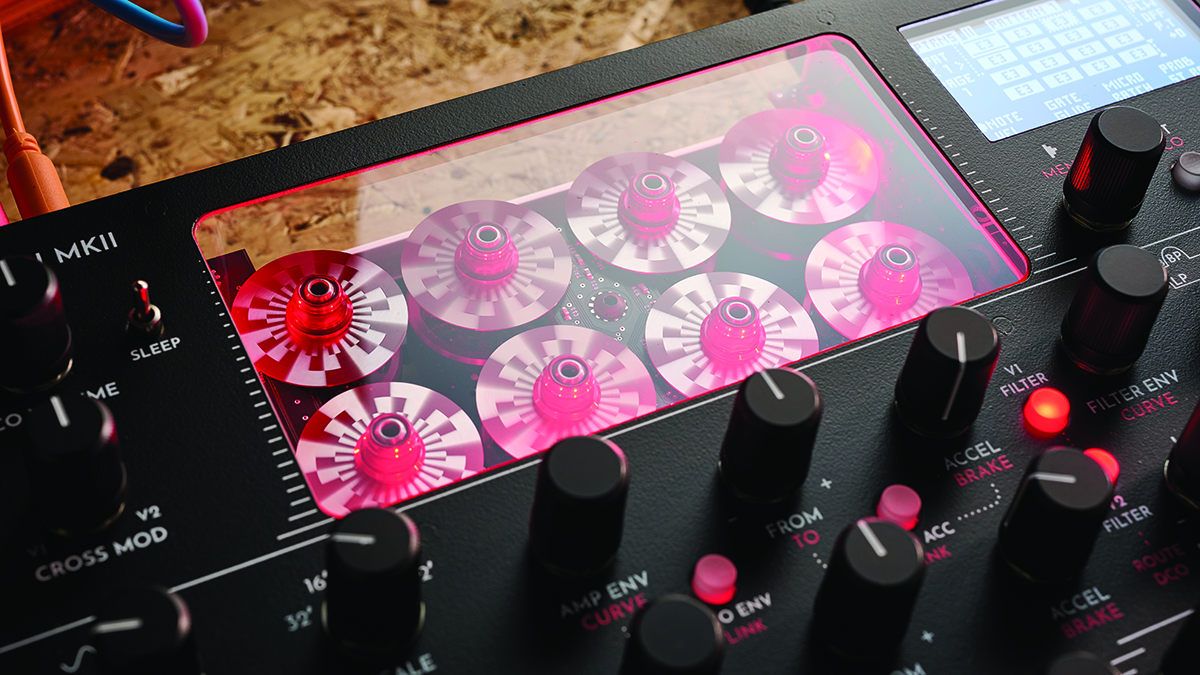
Our initial sonic explorations naturally led towards growling and gritty techno bass. Yes, you can easily get big, warm and brassy analogue pads, especially with the newly added Detune and Drift, or intricate percussive tones perfect for those fizzy toplines, but it’s so easy for things to get dark. It’s an angry synth that can turn its hand to many styles and timbres, but you don’t have to push it too far to get it to turn nasty. Luckily, there’s a Sleep switch to instantly mute the sound just in case things get a little too deranged.
This thing kicks out so much mechanical noise it is insane
There is one huge drawback with the Motor Synth II, though, and we only noticed it when we were in the confines of a quiet studio, despite already seeing one in the flesh at Superbooth. This thing kicks out so much mechanical noise it is insane. Now, it’s not so noticeable in a live environment, such as a tradeshow, but you wouldn’t want to be playing any intimate gigs as you’ll be hard-pushed to drown out those motors and the cooling fan. In the studio, you might prefer to be using headphones. The motor speeds coincide with the pitch: the higher the pitch the faster the rotation, and therefore the louder the motor. One saving grace is that the noise harmonics match that of the notes being played.
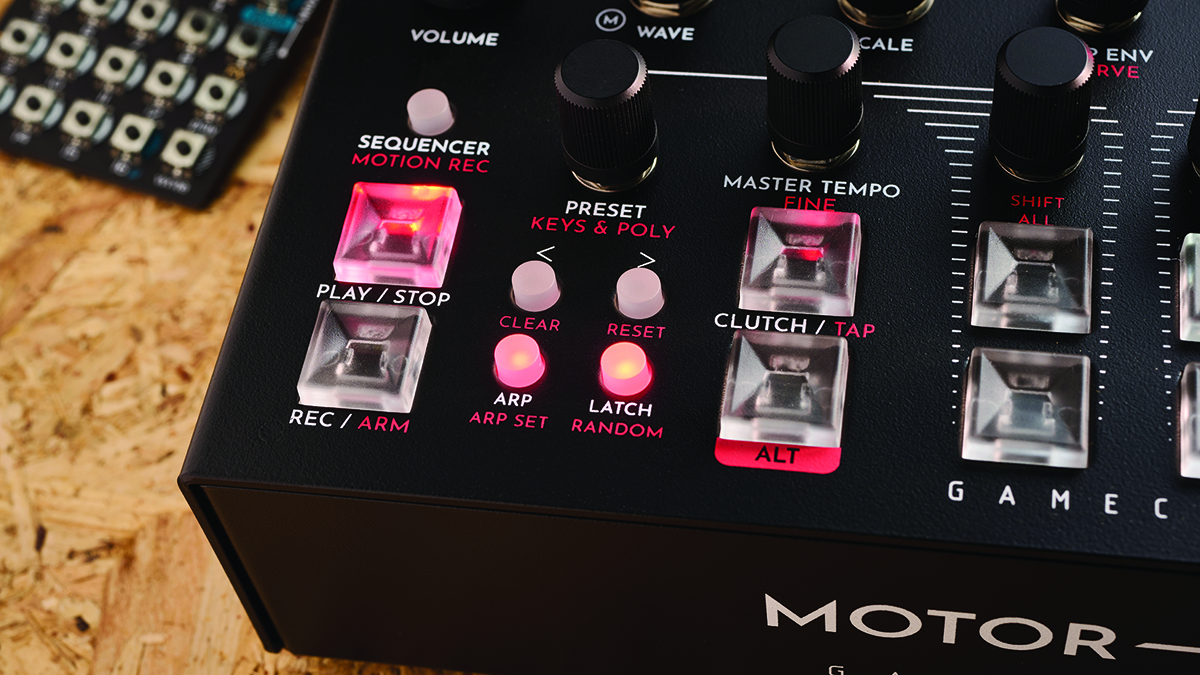
Motor Synth II is deep – there’s so much crammed into this synth that there’s plenty of control hidden beneath the surface. You’ll find there’s a lot of menu-diving on nearly all the features, with some more fiddly than others. Control for each menu can differ from one to the next, to the point it can be quite frustrating. This inconsistency seems indicative of development over time. Considering version two has seen a lot of new features added, it’s not surprising that some things seem to have been shoehorned in.
The two rotary encoders next to the display do a fair job, but sometimes not everything on screen is available to them and instead controlled elsewhere, which seems an odd choice. For instance, within the Mod menu, you use the left display encoder to scroll through menu items down the left-hand side, however, it stops at the point of the rate/division option which you’ll need to use the dedicated knob in the mod section for that. For a system that relies on plenty of menu-diving, a consistent approach to menu control would’ve been more welcome.
For all its finery, this instrument doesn’t feature any effects, and there might be the assumption that an instrument in this price range should have at least something along the lines of reverb, delay or chorus. This is not to say there aren’t plenty of sound-mangling capabilities here. Motor Synth has that in spades. The Drive on the Filter can get very gritty but not out of control. Combine it with the Cross Mod and you can easily rip your patch a new one. You’ve also got the three LFOs and eight lanes of motion sequencing to get plenty of movement going. Interestingly, there are (pre-filter) sends and returns for each voice; ideal for integrating your outboard effects.
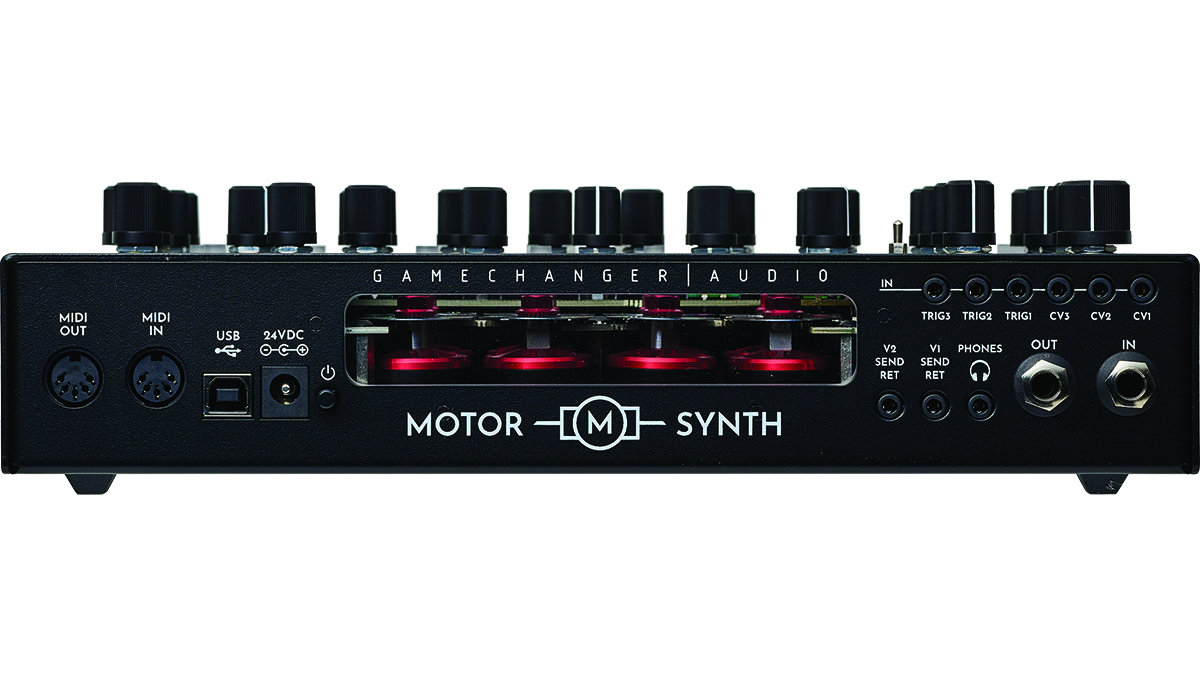
Input audio
Just when you think Gamechanger Audio couldn’t cram any more features into this synth, you stumble across the Vocoder/Input Envelope Follower. They don’t seem to shout about it either, presumably as the focus is on those eight motors, but you can connect any audio source to the 1/4” input and make use of the flexible routing options. Both Vocoder and Envelope Follower will route the signal directly into the motors and with the latter, giving you the option of further routing that audio into the Sequencer and Arp, or not. Alternatively, you can select the input signal to mix with the motor and DCO voices.
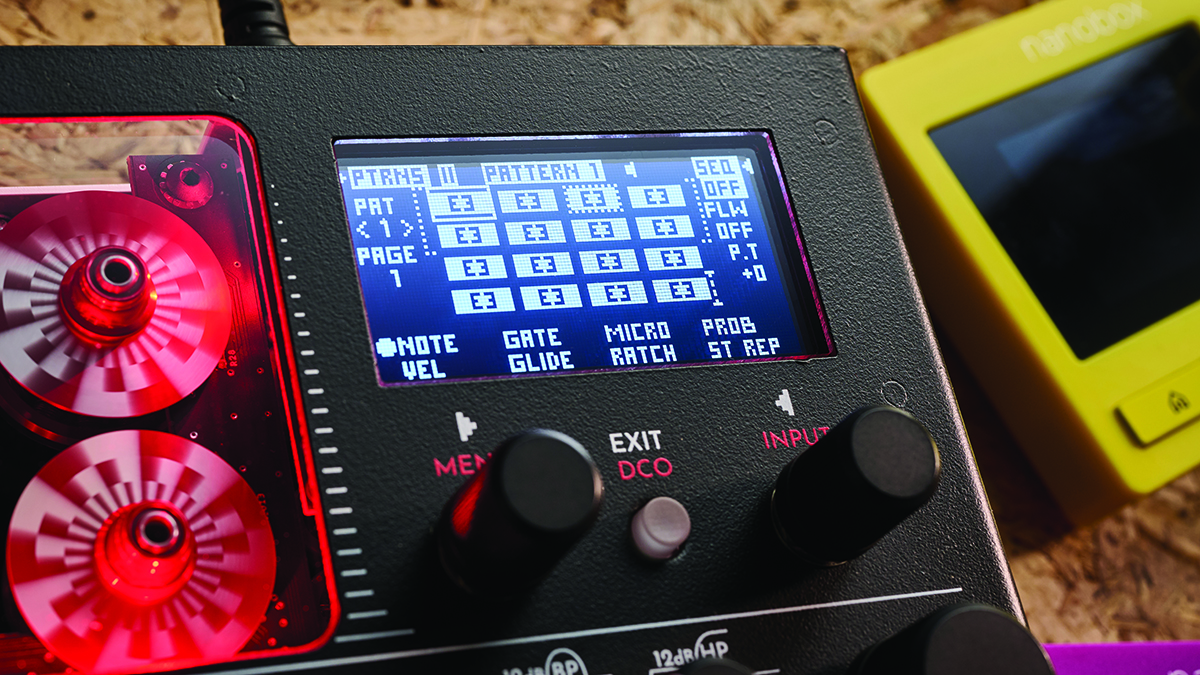
Performance
There’s a huge focus on performance in Motor Synth II, centred around the eight pads and four encoders. The pads aren’t velocity-sensitive, but you can shift octaves, albeit with a two-key combo (Clutch and < or >). It’s slightly better than trying to shoehorn a mini-keyboard onto the interface, but this setup won’t please keyboard players. You’ll have to plug in a MIDI controller for that. However, being untethered to the standard chromatic scale with plenty of different scale options at your disposal is a good thing.
Performance really comes into its own with the Sequencer and Arp. Both are feature-packed and yield usable sonic results. The sequencer features ratchet, step repeat, probability and microtonal control alongside the standard note, gate and velocity options. The Arp is also bolstered by more-than-your-average note repeat, accent, and swing controls to fine-tune the performance of your patch. A boon to Motor Synth II’s crown is the Clutch feature, which you can use to create transitions between patch edits. While holding the Clutch button, any tweaks made will be silent and only heard on release as the changes swell into effect all at once.

Verdict
What we love most about this synth is that it’s ridiculous, and we mean that in the nicest possible way. The Motor Synth II isn’t for everyone, it’s eye-wateringly expensive and very noisy, but it should be lauded for being different, for pushing synth technology forward, and for being a bonkers idea brought to fruition. It’s not all gimmick and no substance. Even if you replaced the electro-mechanical features there’s still so much synth to play with.
The flexible signal routing and modulation, a plethora of I/O, extensive sequencing and performance functionality all add up to a thoroughly fun and deep machine. The price is steep and, while too rich for some tastes, is worth every penny. You can tell a lot of blood, sweat and tears have been poured into this project and plenty of improvements to warrant a new version. Yes, you could invest in a Model D and that might be the safe option, but don’t pick safe…
MusicRadar verdict: Motor Synth II is a bastion of ingenuity. It’s noisy and expensive, but so much fun. There’s nothing quite like it.
Gamechanger Audio Motor Synth II: The web says
"In our current synthesizer renaissance, it's always refreshing to see an instrument that is so boldly different from everything else, and we can easily say that Gamechanger Audio succeeded in making the MOTOR Synth MkII beautifully unique."
Perfect Circuit
Gamechanger Audio Motor Synth II: Hands-on demos
Gamechanger Audio
Andertons Synths, Keys and Tech
Store DJ
Miles Away
Gamechanger Audio Motor Synth II: Specifications
- KEY FEATURES: Hybrid electro-mechanical desktop polysynth, with two independent motor voices and one digital voice. i/0: Audio 1/4” TS In, 1/4” TS/TRS Out, MIDI in/out (5-pin), 3 CV and 3 Trigger inputs, 3.5mm send and return, 3.5mm headphone output, 24v DC power input, USB type-B.
- CONTACT: Gamechanger Audio
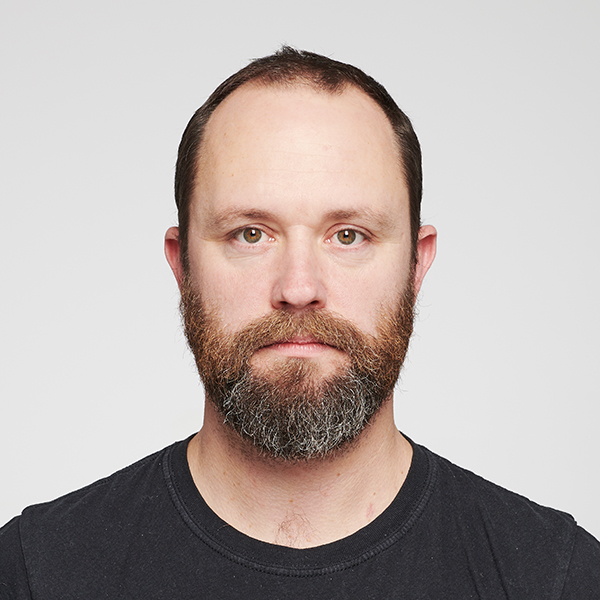
I take care of the reviews on MusicRadar and Future Music magazine, though can sometimes be spotted in front of a camera talking little sense in the presence of real musicians. For the past 30 years, I have been unable to decide on which instrument to master, so haven't bothered. Currently, a lover of all things high-gain in the guitar stakes and never one to resist churning out sub-standard funky breaks, the likes of which you'll never hear.




